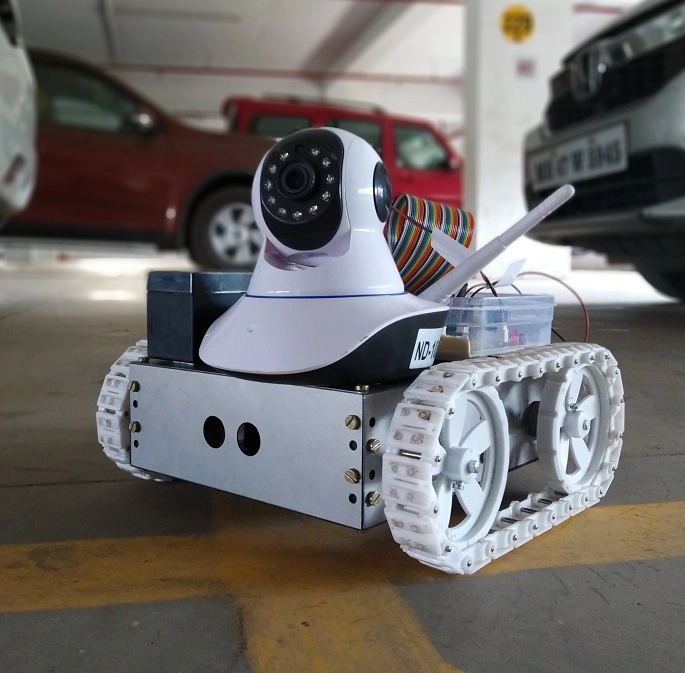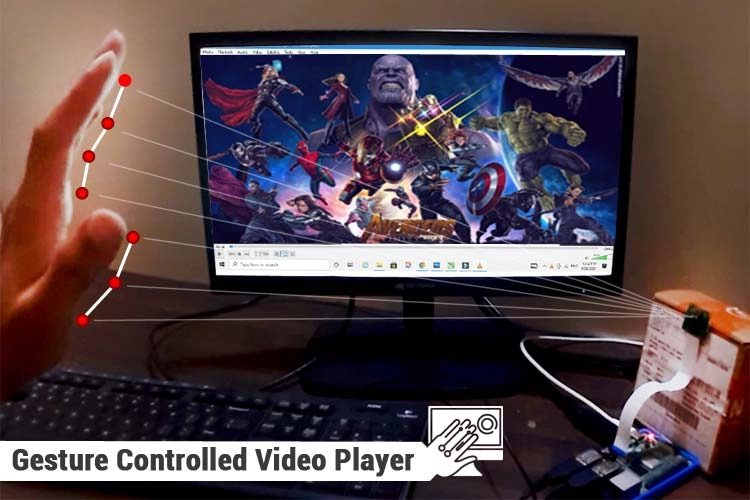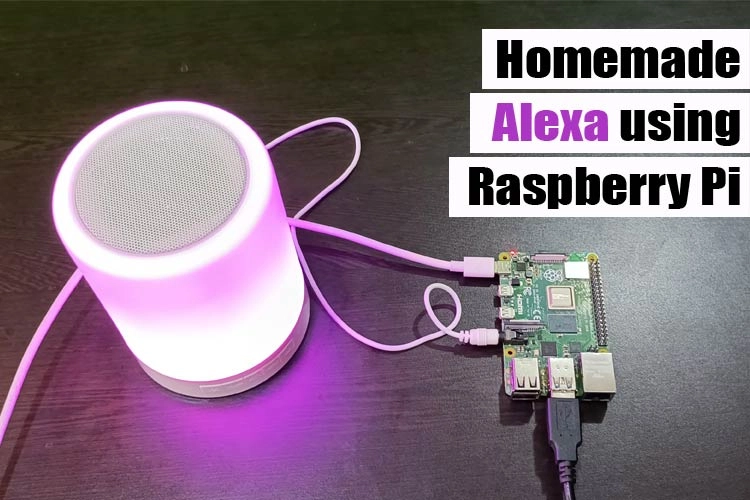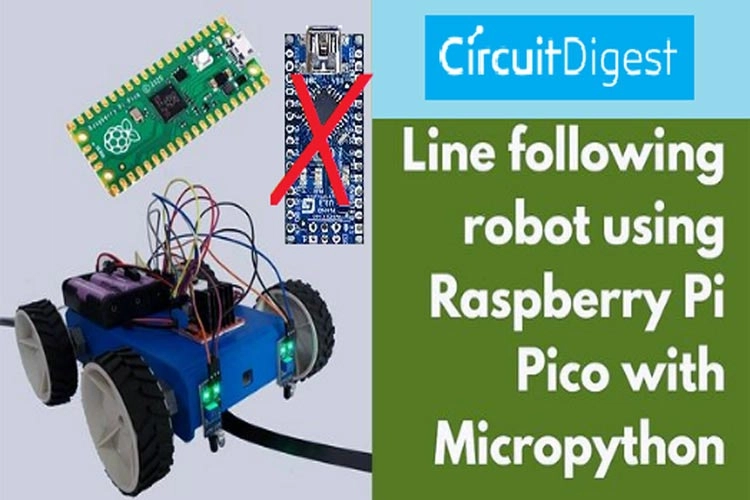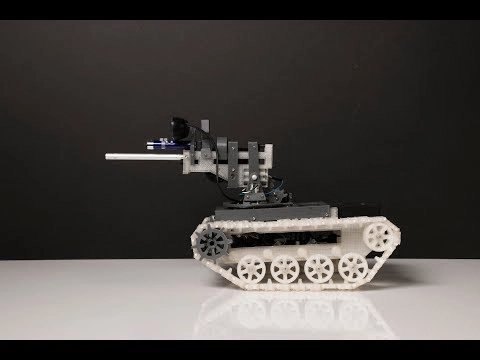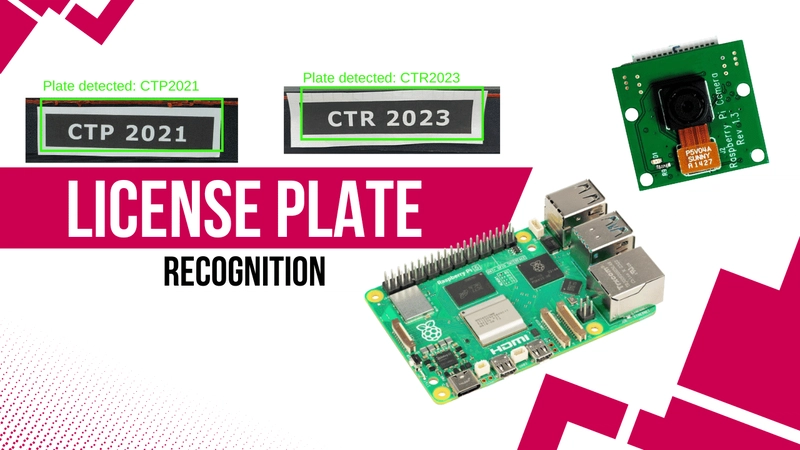10 Opensource Projects Using Raspberry Pi and Python
10 Opensource Projects Using Raspberry Pi and Python Welcome to a collection of Raspberry Pi projects that explore various applications in automation, security and interactive technology. This selection includes projects such as emotion recognition, gesture-controlled media players, voice activated speakers and autonomous robots like line followers and surveillance systems. Also featured are innovative solutions for biometric attendance, license plate recognition, anti-theft flooring and transparent displays using creative design techniques. Each project highlights the versatility of Raspberry Pi and demonstrates how simple hardware integrations can solve real-world challenges through practical, hands-on approaches. Let’s Explore these projects to discover practical methods and innovative ideas for integrating technology into work. Emotion Recognizer This Raspberry Pi Based Emotion Recognition using OpenCV, TensorFlow and Keras project uses a VGG-like CNN trained on the FER2013 dataset to detect faces and classify six emotions - Angry, Fear, Happy, Neutral, Sad and Surprise. The system processes real-time video feeds, extracting facial regions and predicting expressions accurately. Applications include monitoring employee engagement, evaluating patient mental health in medical settings and assisting law enforcement in suspect emotion analysis during interrogations. By integrating robust image processing with compact hardware, this project facilitates advanced emotional analytics for diverse, practical scenarios. Surveillance Robot This Raspberry Pi based Android Controlled Surveillance Robot project uses a Raspberry Pi interfaced with a Bluetooth module to control a mobile robot via an Android app. A 360-degree night vision camera mounted on the robot provides live video streaming to the Android device with audio capture and video recording capabilities. The system supports full 360-degree surveillance by rotating the camera, enabling comprehensive monitoring. Designed for challenging security missions, this robot delivers reliable autonomous surveillance in areas where direct human involvement may be unsafe. Gesture Controlled Video Player This Gesture Controlled Video Player using Raspberry Pi and MediaPipe project creates a gesture-controlled media player. It detects six distinct hand gestures—open/closed fist to play or pause, upward/downward motions to adjust volume, and left/right swipes to fast-forward or rewind videos. The system translates natural hand movements into intuitive media commands, eliminating the need for traditional remote controls. A practical application is in smart home environments where users can easily control entertainment systems hands-free during activities like cooking or exercise, enhancing convenience and usability while maintaining a modern, touchless interface. This solution exemplifies the future of interactive home technology. Anti-theft Flooring System This IOT based Anti-theft Flooring System using Raspberry Pi project uses Raspberry Pi to power an IoT based anti-theft flooring system that detects any movement on secure floor tiles. It employs a piezo sensor to sense steps and a camera to capture images. The Raspberry Pi processes sensor signals and automatically directs the camera to the area of intrusion. The system sends alerts and images over the Internet using an IoT web-based interface. In practical application it provides real time security monitoring for residences. It offers enhanced safety by alerting homeowners instantly in case of unauthorized entry thereby preventing potential theft and ensuring peace of mind. Voice Controlled Speaker This How to Build an Amazon Alexa Speaker using Raspberry Pi project creates a smart voice-controlled speaker. A USB microphone captures your voice while a 3.5 mm line in speaker delivers audio responses. The process involves setting up an Amazon Developer Account and registering the device. The device responds to vocal commands to play music, deliver news updates and manage calendars. This project connects advanced voice recognition technology with compact hardware in a simple build that offers an engaging interactive experience in your everyday life. It combines technical innovation with seamless integration into daily routines with ease. Line Follower Robot Leveraging the Raspberry Pi Pico with an L298N Motor Driver and two IR sensors, this Raspberry Pi Pico based Line Follower Robot project builds an autonomous line follower car that tracks paths by detecting infrared light reflections. The system interprets sensor data to guide its movement by turning left, right or moving straight based on light absorption differences. The technical design relies on energy efficiency and fast processing using Thonny IDE and MicroPython for programming. In a practical setting, this robot can transport materials in factories or warehouses, na
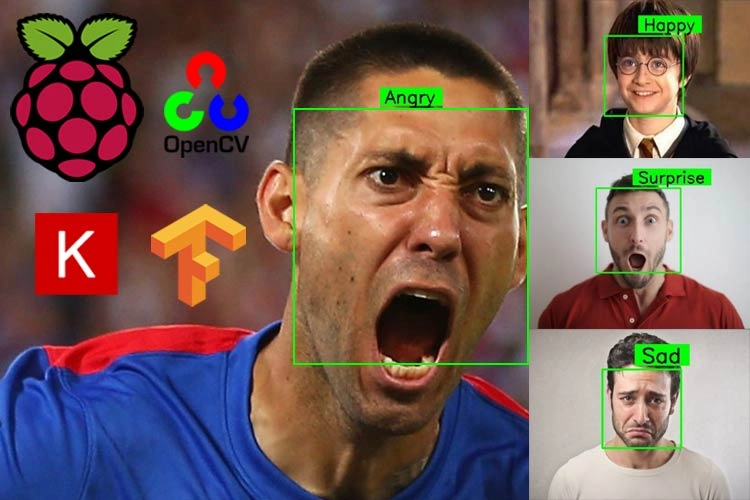
10 Opensource Projects Using Raspberry Pi and Python
Welcome to a collection of Raspberry Pi projects that explore various applications in automation, security and interactive technology. This selection includes projects such as emotion recognition, gesture-controlled media players, voice activated speakers and autonomous robots like line followers and surveillance systems. Also featured are innovative solutions for biometric attendance, license plate recognition, anti-theft flooring and transparent displays using creative design techniques.
Each project highlights the versatility of Raspberry Pi and demonstrates how simple hardware integrations can solve real-world challenges through practical, hands-on approaches. Let’s Explore these projects to discover practical methods and innovative ideas for integrating technology into work.
Emotion Recognizer
This Raspberry Pi Based Emotion Recognition using OpenCV, TensorFlow and Keras project uses a VGG-like CNN trained on the FER2013 dataset to detect faces and classify six emotions - Angry, Fear, Happy, Neutral, Sad and Surprise. The system processes real-time video feeds, extracting facial regions and predicting expressions accurately. Applications include monitoring employee engagement, evaluating patient mental health in medical settings and assisting law enforcement in suspect emotion analysis during interrogations. By integrating robust image processing with compact hardware, this project facilitates advanced emotional analytics for diverse, practical scenarios.
Surveillance Robot
This Raspberry Pi based Android Controlled Surveillance Robot project uses a Raspberry Pi interfaced with a Bluetooth module to control a mobile robot via an Android app. A 360-degree night vision camera mounted on the robot provides live video streaming to the Android device with audio capture and video recording capabilities. The system supports full 360-degree surveillance by rotating the camera, enabling comprehensive monitoring. Designed for challenging security missions, this robot delivers reliable autonomous surveillance in areas where direct human involvement may be unsafe.
Gesture Controlled Video Player
This Gesture Controlled Video Player using Raspberry Pi and MediaPipe project creates a gesture-controlled media player. It detects six distinct hand gestures—open/closed fist to play or pause, upward/downward motions to adjust volume, and left/right swipes to fast-forward or rewind videos. The system translates natural hand movements into intuitive media commands, eliminating the need for traditional remote controls. A practical application is in smart home environments where users can easily control entertainment systems hands-free during activities like cooking or exercise, enhancing convenience and usability while maintaining a modern, touchless interface. This solution exemplifies the future of interactive home technology.
Anti-theft Flooring System
This IOT based Anti-theft Flooring System using Raspberry Pi project uses Raspberry Pi to power an IoT based anti-theft flooring system that detects any movement on secure floor tiles. It employs a piezo sensor to sense steps and a camera to capture images. The Raspberry Pi processes sensor signals and automatically directs the camera to the area of intrusion. The system sends alerts and images over the Internet using an IoT web-based interface. In practical application it provides real time security monitoring for residences. It offers enhanced safety by alerting homeowners instantly in case of unauthorized entry thereby preventing potential theft and ensuring peace of mind.
Voice Controlled Speaker
This How to Build an Amazon Alexa Speaker using Raspberry Pi project creates a smart voice-controlled speaker. A USB microphone captures your voice while a 3.5 mm line in speaker delivers audio responses. The process involves setting up an Amazon Developer Account and registering the device. The device responds to vocal commands to play music, deliver news updates and manage calendars. This project connects advanced voice recognition technology with compact hardware in a simple build that offers an engaging interactive experience in your everyday life. It combines technical innovation with seamless integration into daily routines with ease.
Line Follower Robot
Leveraging the Raspberry Pi Pico with an L298N Motor Driver and two IR sensors, this Raspberry Pi Pico based Line Follower Robot project builds an autonomous line follower car that tracks paths by detecting infrared light reflections. The system interprets sensor data to guide its movement by turning left, right or moving straight based on light absorption differences. The technical design relies on energy efficiency and fast processing using Thonny IDE and MicroPython for programming. In a practical setting, this robot can transport materials in factories or warehouses, navigating marked routes independently. Its compact design and low energy use make it an ideal solution for automated transport.
Camera Based Tanker
This Raspberry Pi Cam Tank V1.0 project builds a cam tank that streams live video and provides remote control capabilities. A Raspberry Pi version B, powered USB hub, USB webcam and WiFi dongle form the system’s core, while high-torque servos drive movement and tower functions. The design incorporates suspension for smoother motion and integrates a tilting BB gun mechanism for added realism. Operating via a web interface, users can control the tank from a smartphone over WiFi. A practical example is remote exploration, where users safely inspect challenging or confined spaces without direct exposure, enhancing operational efficiency.
Glass Dome Based Transparent Display
This project of using a Raspberry Pi with a small round LCD and custom glass dome to create a transparent display using the Pepper's Ghost effect. Inside the dome, a clear reflector is positioned at a 45-degree angle to produce an optical illusion that makes images appear to float. The Raspberry Pi outputs visuals to the LCD housed in the 3D printed base, while a privacy shield conceals the source screen. Open-source code and 3D models are provided for replication. This design can be integrated into interactive digital signage or immersive museum exhibits to captivate audiences with futuristic displays.
Vehicle License Plate Recognizer
This License Plate Recognition Using OpenCV with Raspberry Pi 5 project implements a real-time License Plate Recognition System using Raspberry Pi 5, OpenCV and Tesseract OCR. The system captures live video from a connected camera and detects vehicle license plates with image processing techniques. It then applies Optical Character Recognition to extract the plate numbers, comparing them against a predefined list to classify entries as either Staff or Outsider. Recognized plates are stored with status labels for further processing and documentation. This technical solution automates vehicle identification and is ideal for managing parking facilities and enhancing office security by streamlining access control and record keeping for enhanced improved safety.
Biometric Attendance System with Temperature Recorder and Sanitizer Dispenser
This Raspberry Pi based Biometric Attendance System with Temperature Recorder and Sanitizer Dispenser project uses a combination of Raspberry Pi 4 and Arduino UNO. It integrates HC-SR04 ultrasonic sensors to trigger a 5MP camera and MLX90614 contactless infrared temperature sensor, while an MG995 servo motor activates sanitizer dispensing. Face recognition is handled by a dedicated Python module and a 20x4 LCD with an I2C interface displays details. A 5V active buzzer provides alerts and collected data is sent via email as an Excel file. By uniting sensor data, real-time processing and serial communication, the system automates attendance and body temperature screening seamlessly in work environments, educational institution and other places.











































































































































































![[The AI Show Episode 142]: ChatGPT’s New Image Generator, Studio Ghibli Craze and Backlash, Gemini 2.5, OpenAI Academy, 4o Updates, Vibe Marketing & xAI Acquires X](https://www.marketingaiinstitute.com/hubfs/ep%20142%20cover.png)




























































































































![[DEALS] The Premium Learn to Code Certification Bundle (97% off) & Other Deals Up To 98% Off – Offers End Soon!](https://www.javacodegeeks.com/wp-content/uploads/2012/12/jcg-logo.jpg)


![From drop-out to software architect with Jason Lengstorf [Podcast #167]](https://cdn.hashnode.com/res/hashnode/image/upload/v1743796461357/f3d19cd7-e6f5-4d7c-8bfc-eb974bc8da68.png?#)








































































































.png?#)

































_Christophe_Coat_Alamy.jpg?#)
 (1).webp?#)





































































































![Apple Considers Delaying Smart Home Hub Until 2026 [Gurman]](https://www.iclarified.com/images/news/96946/96946/96946-640.jpg)
![iPhone 17 Pro Won't Feature Two-Toned Back [Gurman]](https://www.iclarified.com/images/news/96944/96944/96944-640.jpg)
![Tariffs Threaten Apple's $999 iPhone Price Point in the U.S. [Gurman]](https://www.iclarified.com/images/news/96943/96943/96943-640.jpg)

































































































































